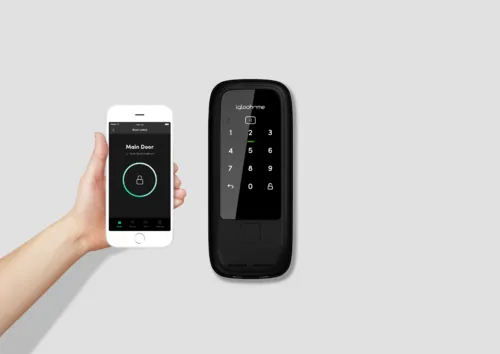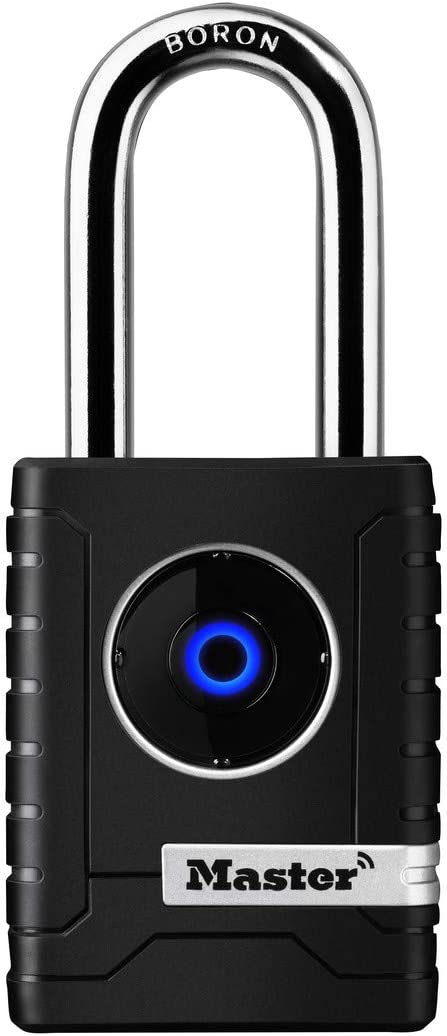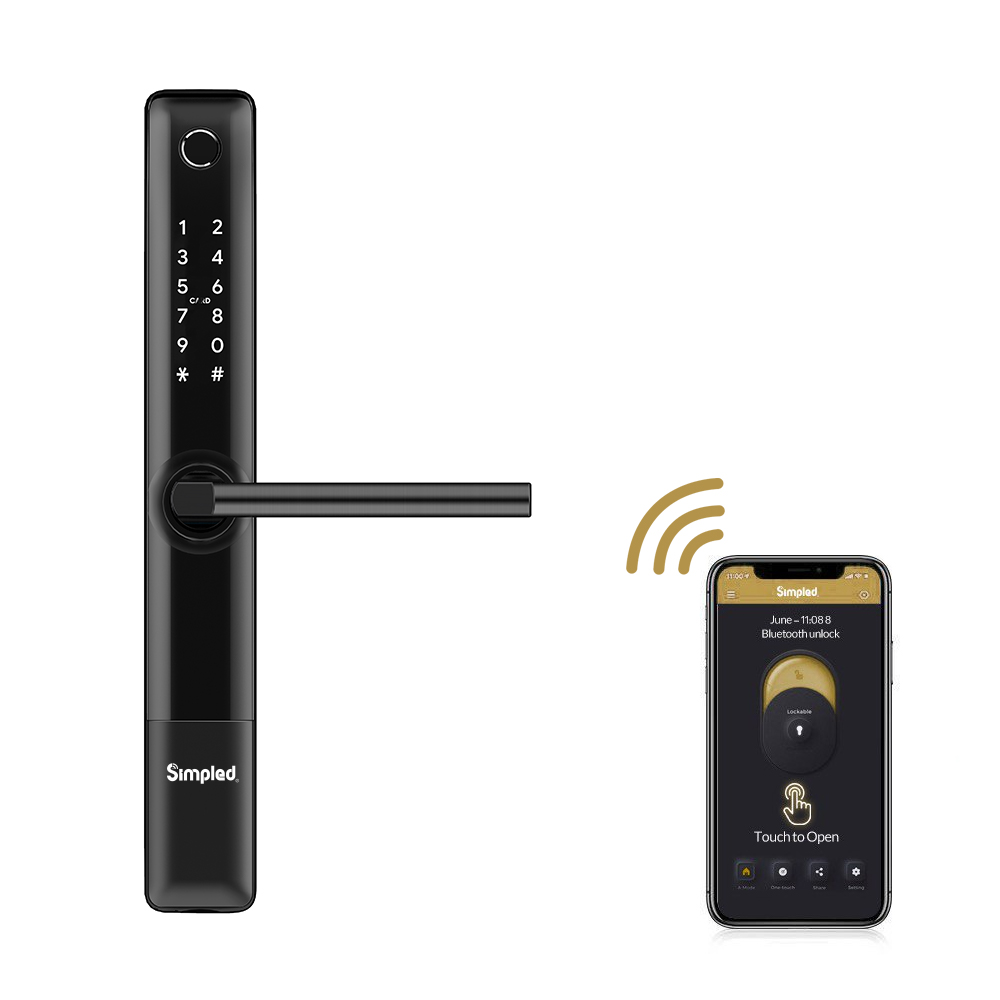Unlock the Potential of Smart Locks Tips and Tricks for Optimal Use

Do you want to make the most of your smart lock?
Smart locks are a type of lock that uses advanced technology to provide access control. They work by using a variety of sensors, such as Bluetooth and Wi-Fi, to communicate with other devices, allowing users to lock and unlock doors remotely using their smartphones or other connected devices.
One of the main benefits of using smart locks for home security is increased convenience. With smart locks, users don't need to carry physical keys, which can be lost or stolen. Instead, they can lock and unlock doors remotely using their smartphones or other connected devices.
Smart locks also offer enhanced security measures, as they often come with features such as temporary access codes that expire after a set period. This feature reduces the risk of unauthorised access, ensuring only authorised individuals can access the property or asset.
However, there are potential risks and challenges associated with smart lock usage. For instance, hackers may attempt to gain access to the system through vulnerabilities in the software or hardware. To mitigate these risks, following best practices for optimal use is essential, such as updating software regularly and choosing high-quality products from reputable manufacturers.
Smart locks offer numerous benefits for home security, including increased convenience and enhanced security measures. However, it's crucial to be aware of potential risks and challenges associated with their usage and follow best practices for optimal use. Overall, smart locks are an excellent addition to any home automation system and effectively enhance access control and security measures in shared spaces and assets.
Choosing the Right Smart Lock for Your Home
Choosing the right smart lock for your home requires careful consideration of several factors:
Compatibility is crucial, and you must ensure that your smart lock is compatible with your existing technology.
Features access codes, biometric authentication, and remote access are essential considerations. Lastly, the price
The significant factor to consider as smart locks vary in price depending on their features and complexity.
There are different types of smart locks are available in the market, such as keypad-based or biometric-based. Keypad-based smart locks are relatively simple and affordable but may not offer advanced features like biometric authentication. On the other hand, biometric-based smart locks offer enhanced security measures but can be more expensive.
To assess your specific needs before making a purchase decision, consider factors such as the level of security required, the number of people who need access to the property or asset, and the level of convenience needed.
When buying a smart lock, choosing quality products from reputable manufacturers is essential. You can buy smart locks from online retailers or brick-and-mortar stores specialising in home automation products.
Choosing the right smart lock for your home requires careful consideration of several factors, such as compatibility, features, and price range. Understanding the different types of smart locks available in the market is essential to make an informed decision. Assessing your specific needs and buying quality products from reputable manufacturers will ensure optimal use and enhance security measures in shared spaces and assets.
Setting Up Your Smart Lock Account Securely

When setting up your smart lock account, it's essential to take steps to ensure its security. Here are some best practices for creating a secure smart lock account:
1. Create strong passwords: Use a combination of letters, numbers, and special characters to create a hard guess password. Avoid using personal information such as your name or birthdate.
2. Enable two-factor authentication (2FA): 2FA adds an extra layer of security by requiring a code and your password to access your account. This code is usually sent to your phone or email.
3. Regularly change access codes/passwords: Changing access codes/passwords every few months helps prevent unauthorised access and enhances security measures.
4. Keep track of who has access rights: Review logs/audit trails generated by the app/hardware regularly to track who has access rights.
5. Keep confidential information private: When setting up an account, keep confidential information such as passwords, access codes, and biometric data private.
Following these best practices ensures your smart lock account is secure and protected from potential security risks.
Setting up your smart lock account securely requires taking steps such as creating strong passwords, enabling 2fa, regularly changing access codes/passwords, keeping track of who has access rights, and keeping confidential information private. By following these best practices, you can enhance security measures in shared spaces and assets while enjoying the increased convenience of smart locks.
Using Your Smartphone or Device with Your Smart Lock App
Compatibility is crucial when using your smartphone or device with your smart lock app. It's essential to ensure that your smartphone/device software updates are compatible with the latest versions available within the app store/play store, etc. This ensures that you can access all the features of the app and control your smart lock remotely.
To download/install/configure mobile apps needed for remote control/access management via smartphone/device, follow these steps:
1. Go to the app store/play store on your smartphone/device.
2. Search for the app associated with your smart lock brand.
3. Download and install the app onto your device.
4. Follow the instructions provided in the app to configure it to work with your smart lock.
The advantages of using smartphones/devices instead of traditional keys/fobs/cards include increased convenience, enhanced security measures, and improved access control. However, disadvantages include potential security risks such as hacking or unauthorised access if not used correctly.
Common issues faced while accessing remotely through mobile devices include poor connectivity, compatibility issues, and software/hardware malfunctions. To troubleshoot these issues, ensure that you have a stable internet connection, check for software updates regularly, and follow the manufacturer's instructions carefully.
Using your smartphone or device with your smart lock app requires ensuring compatibility, following instructions provided in the app carefully, and troubleshooting common issues faced during remote access. By doing so, you can enjoy increased convenience and enhanced security measures offered by smart locks while minimising potential security risks.
Access Management Sharing Codes/Keys with Trusted Individuals
Sharing access codes/keys with trusted individuals requires taking steps to ensure safety and security. Here are some tips on how to do so:
1. Set up temporary access codes: If you need to give someone short-term access, set up a temporary access code that will expire after a set period. This way, you can ensure that the person does not have access to your property or asset beyond the time needed.
2. Revoking access rights: Once the person no longer needs access, revoke their access rights immediately. This ensures that they cannot enter your property or asset without your permission.
3. Communicating changes effectively: To communicate changes effectively, use a secure messaging app or email to inform the person of any changes made to their access rights. Ensure that the message is clear and concise and that the person understands what actions they need to take.
4. Importance of confidentiality: Keep confidential information such as passwords and access codes private when sharing them with trusted individuals.
The advantages of sharing access codes/keys with trusted individuals include increased convenience and flexibility in managing shared spaces and assets. However, disadvantages include potential security risks if not managed correctly.
Sharing access codes/keys with trusted individuals requires taking steps such as setting up temporary access codes, revoking access rights when no longer needed, communicating changes effectively, and keeping confidential information private. By doing so, you can enhance security measures in shared spaces and assets while enjoying the increased convenience offered by smart locks.
Advanced Features Geofencing & AutoLock Settings
Geofencing and AutoLock settings are advanced features available in many smart lock apps that enhance convenience and security measures. Geofencing allows you to set rules based on location, like automatically locking or unlocking the door when leaving or arriving home. This feature works by using your smartphone's GPS to determine when you are within a certain distance from your property or asset.
The benefits of using the AutoLock feature include increased security measures and peace of mind. This feature can automatically lock the door after a certain period of time, ensuring that the door is always locked, even if you forget to do so manually.
To configure these settings in your Smart Lock app, follow these steps:
1. Open the app associated with your smart lock brand.
2. Navigate to the settings menu.
3. Select the option for Geofencing or AutoLock.
4. Follow the instructions provided in the app to configure these settings based on your preferences.
Common issues faced while using these features include poor connectivity, software/hardware malfunctions, and compatibility issues with your smartphone/device.
Geofencing and AutoLock settings are advanced features available in many smart lock apps that enhance convenience and security measures. By configuring these settings based on your preferences, you can enjoy increased peace of mind and enhanced security measures in shared spaces and assets.
Integrating Your Smart Locks with Other Home Security Systems
 hjjjjjjy
hjjjjjjy
Integrating your smart locks with other home security systems can enhance the overall security measures in your property or asset. This integration allows you to connect different devices, such as cameras, alarms, and sensors, providing a more comprehensive approach to security.
The advantages of integrating smart locks with other home security systems include increased convenience, enhanced security measures, and peace of mind. However, disadvantages may include potential compatibility issues and additional costs associated with purchasing and installing these devices.
To configure/integrate different devices/systems together, follow these steps:
1. Ensure that all devices are compatible with each other.
2. Install and set up each device according to the manufacturer's instructions.
3. Connect each device to the same network or hub.
4. Follow the instructions provided in the app to configure/integrate these devices/systems based on your preferences.
Common issues faced during the integration process include poor connectivity, compatibility issues, and software/hardware malfunctions. To troubleshoot these issues, ensure that all devices are updated with the latest software/firmware and check for compatibility issues before purchasing any new device.
Integrating your smart locks with other home security systems can enhance overall security measures in shared spaces and assets. By following instructions provided by manufacturers carefully and troubleshooting common issues effectively, you can enjoy increased convenience and peace of mind offered by smart locks while maximising overall security measures in your property or asset.
Maintaining Your Smart Locks Properly
Maintaining your smart locks properly is crucial to ensure their longevity and optimal performance. Here are some tips for maintaining your smart locks:
1. Battery Replacement & Firmware Updates: Replace batteries regularly and update the firmware as needed to ensure that your smart lock functions correctly.
2. Regular Testing: Before leaving the house, test whether you locked or unlocked doors successfully via mobile app or keypad to avoid any potential security risks.
3. Backup Keys: Keep backup keys in a safe location in case of emergency situations, such as power outages or if your smartphone is lost/stolen.
4. Troubleshooting: Take immediate action if there is any malfunctioning issue found by contacting the manufacturer's customer support team or seeking professional help.
By following these best practices, you can ensure that your smart locks function optimally and provide enhanced security measures over time.
Avoiding Potential Risks and Threats Associated With Smart Lock Usage
Smart locks offer convenience and enhanced security measures, but they also come with potential risks and threats that users need to be aware of. These include hacking/phishing attacks, physical theft of the device, and unauthorised access by individuals who have gained access to your mobile app or keypad.
To avoid these risks and threats, users should follow proper security protocols/tips mentioned above, including regularly testing the lock before leaving the house, keeping backup keys in a safe location, and replacing batteries/firmware updates as needed. It's also important to regularly review logs/audit trails generated by the Smart Lock App/Hardware to identify suspicious activities.
If any security breach is suspected, users should take immediate action by contacting the manufacturer's customer support team or seeking professional help. It's critical to change passwords and access codes immediately if there is any indication of unauthorised access.
While smart locks offer convenience and enhanced security measures, it's essential to be aware of potential risks and threats associated with their usage. By following the proper security protocols/tips mentioned above and taking immediate action if any security breach is suspected, users can enjoy optimal performance from their smart locks while minimising potential risks and threats.
Reviews and Feedback from Other Customers
When considering purchasing a new smart lock or accessories online, it's essential to read reviews and feedback from other customers. This information can provide valuable insights into the product's quality, reliability, and security features.
To find reliable sources for customer reviews, look for reputable websites that specialise in smart home products or technology. These sites often have a community of users who share their experiences and opinions about different products. Additionally, check the manufacturer's website for customer reviews or testimonials.
When interpreting these reviews, look for patterns in feedback, such as recurring issues related to security or functionality. Consider both positive and negative reviews to get a balanced perspective on the product's strengths and weaknesses.
If you come across low ratings or negative feedback regarding security issues, it's crucial to take them seriously. Look for alternative products with higher ratings or consult with a security expert before making a purchase.
Reading reviews and feedback from other customers is an essential step in purchasing any new smart lock or accessories online. By finding reliable sources for customer reviews and interpreting them effectively, you can make informed decisions about which products are best suited for your needs while minimising potential risks and threats associated with smart lock usage.
Final Thoughts Unlocking the Full Potential of Your Smart Locks
Smart locks have become an essential part of modern homes and offer a range of benefits over traditional keys, fobs, or cards. By following best practices for maintaining and securing your smart lock, you can unlock its full potential.
Regular maintenance, such as battery replacement, firmware updates, and testing before leaving the house, can help ensure that your smart lock functions correctly. Keeping backup keys in a safe location is also crucial in case of emergencies.
Reading reviews and feedback from other customers can provide valuable insights into the product's quality, reliability, and security features. It's important to interpret these reviews effectively by looking for patterns in feedback and considering both positive and negative reviews.
Future trends in home automation/security systems may impact smart lock usage. As technology advances, we can expect more integration with other devices and increased emphasis on security measures.
Investing in a quality smart lock can be a good decision for your home's safety and convenience. By following best practices for maintaining and securing your smart lock, you can enjoy enhanced security measures while minimising potential risks and threats associated with smart lock usage.
